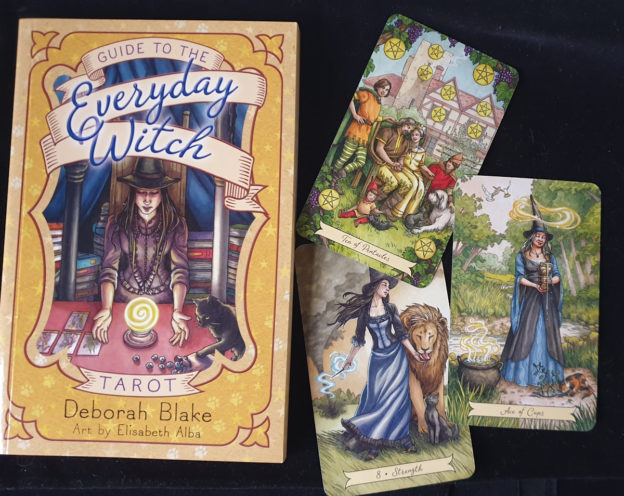I’ve seen a lot of people, having been gifted a tarot deck, start with enthusiasm, only to give up when they realize that tarot is a complex system. It has a life-long learning curve. I’ve been reading the cards for 24 years and it’s still not done with me. I learn new things all the time… it might be a different way of interpreting a card, a set of circumstances that remind me of a combination of cards, or someone cleverer than me turns up a new and interesting historical fact. Here are 5 tarot tips and preferences from a professional.
Tarot Tip 1. Your First Tarot Deck
Choose your deck carefully. And please ignore the myth that you have to be given your first deck.
The most common deck is the Rider-Waite-Smith. However, not everyone is able to connect with those old-fashioned images. And there’s no point having a deck with imagery you can’t connect to your life. Luckily, there are many modern versions which may spark your interest. Note: the following links are to Amazon and I will earn a small commission should you purchase.
If you are attracted to whimsy, the Every Day Witch Tarot by Deborah Blake and Elisabeth Alba, is perfect. The illustrations are different enough to the RWS to spark your imagination, but hold similar meanings. The book that accompanies it is long enough to impart useful information but short enough to digest easily.
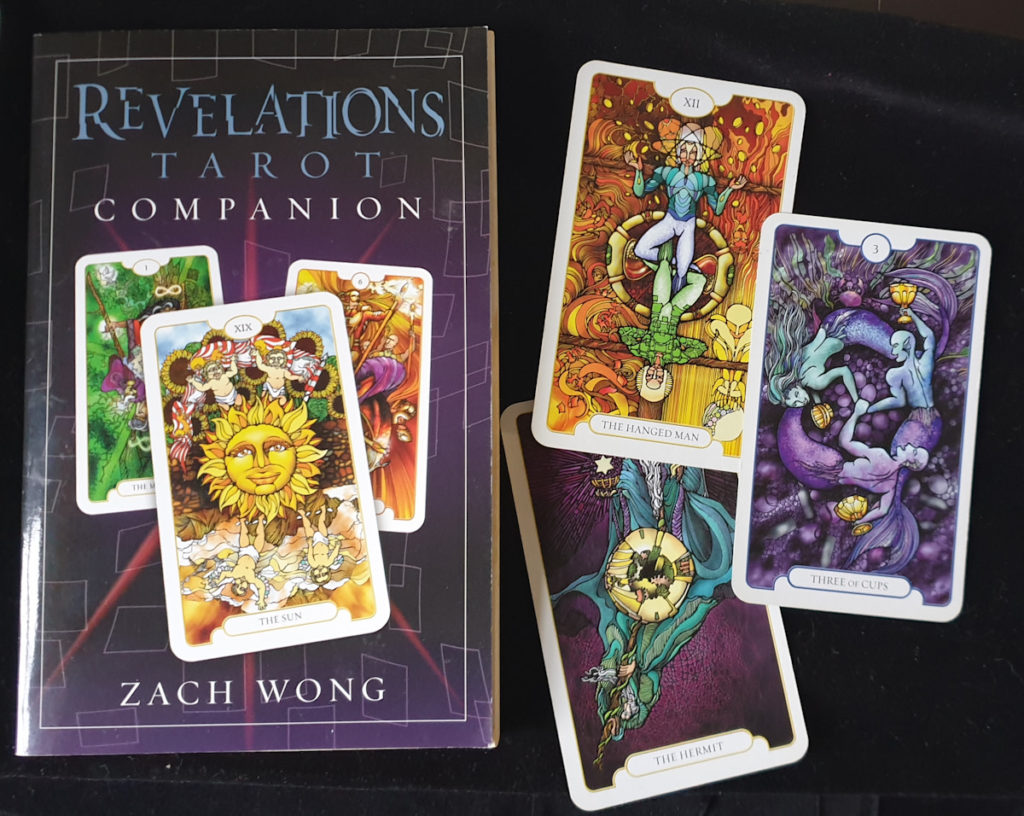
The Revelations Tarot by Zach Wong. Photo by author.
Should you prefer a slightly more abstract deck, the Revelations Tarot by Zach Wong is for you. What I like about this deck is that the illustrations are very RWS-like but they also show the reversed image on the same card.
A third deck that I like very much for beginners is the ViceVersa Tarot by Massimiliano Filadoro and David Corsi. The accompanying book was written by the renowned tarotist, Lunae Weatherstone. This deck has images on both sides and follows the Rider-Waite-Smith illustrations pretty closely. I love the reversed viewpoint that adds a valuable new dimension to the cards and makes reading reversals easy-peasy.
If you would prefer to start with the standard, then think about the Universal Waite Tarot Deck which has the original Pamela Colman Smith illustrations but they have been recoloured by Mary Hanson-Roberts. They are softer and somewhat more modern-looking than the original.
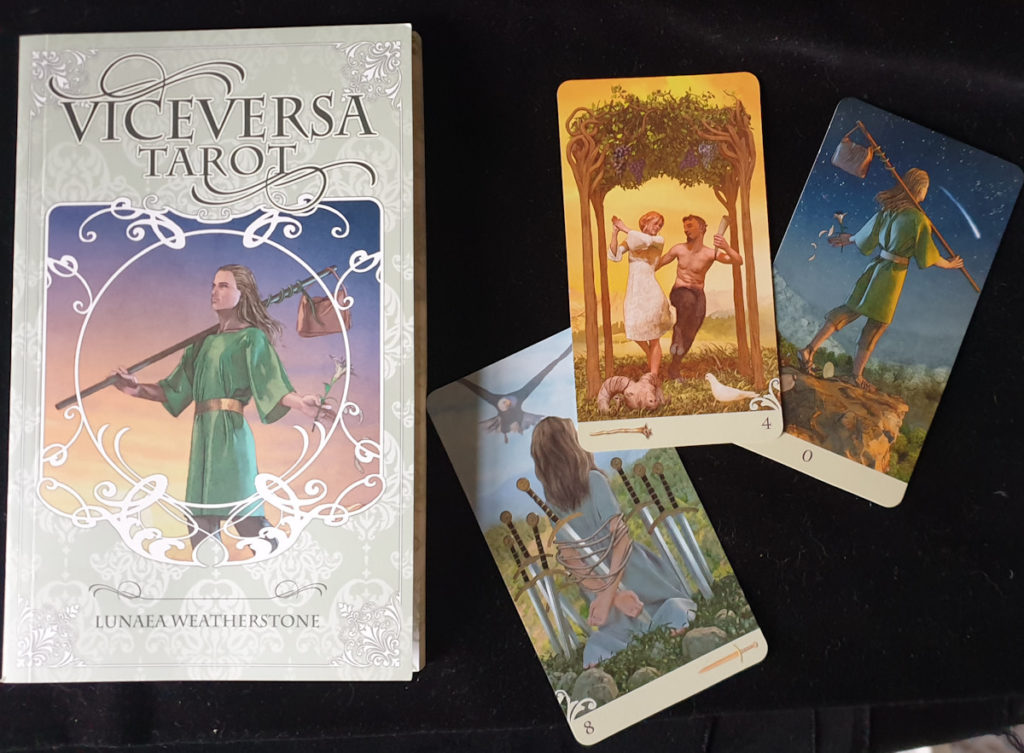
The ViceVersa Tarot. Photo by author.
Where to Buy Your First Tarot Cards
You can buy your deck anywhere you like. If though, you decide to buy through Amazon, be very aware that there are hundreds of fake Chinese printed decks available. If you are short of money, then go ahead, but if you want the quality of the originals make sure that’s what you are buying. You can generally tell by the title and number of reviews. The fake ones will often contain the words ‘card game’. Make sure the product description contains the ISBN (International Standard Book Number) and information about the creator.
I have bought several second-hand decks from eBay. They were mainly collectors’ decks but I’ve never had a bad experience buying second-hand. It’s always a good idea to ‘cleanse’ a second-hand deck. More of this later.
Tarot Tip 2: Create a Learning Path
It’s tempting to leap right in, shuffle your new deck, and lay out a quick past, present, future spread, then look up the meanings in your book. And, of course, you can do that. There’s nothing like practical experience when learning how to read the cards. But if you continue to do that, you will never learn the subtle nuances and how to step outside of the book meanings. It gets old and boring very quickly and that’s where so many give up and the deck ends up unloved in a dark corner.
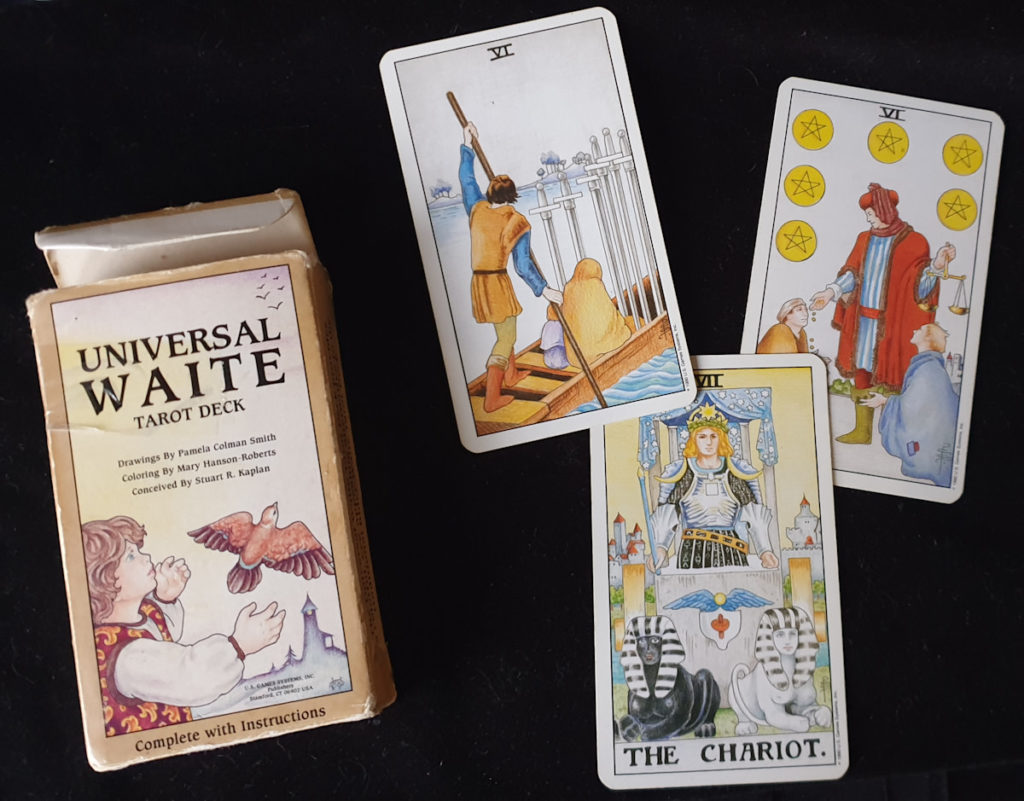
However, if you are determined to master the tarot, I suggest you create a study path for yourself. How you do this is up to you—only you know how you learn and assimilate information. The end goal is to be able to extract accurate meanings from the cards that resonate with your client or yourself.
The first jumping off point I recommend is ‘The Fool’s Journey’. The Fool of the tarot is floating. His number 0 is not tied into the numerical pathway of the Major Arcana. The Fool’s Journey follows his progression as he meets each of the other Majors. He learns important lessons from each. These lessons also apply to us even though we won’t encounter them in the structured order of the cards.
Take the Fool card and pair him with each Major Arcana in turn. Read up on what he learns but also try to add your own impressions. Also, you can take the individual Major archetypes and set them on their own similar journeys.
Tarot Tip 3: Understand the Tarot Structure
I’ve already mentioned the Majors—there are 22 of them, including the Fool. There are also the Minor Arcana, 56 of them. They are divided into Ace to tens plus 16 Court Cards.
The Minors reflect day-to-day situations and the Court cards are personality cards split into four ranks, Pages (children and young people), Knights (youngish adults), Queens (adult women) and Kings (adult men). There is some overlapping but I find that most people fit into one of these categories.
The Minors are also divided into four suits, each of which is connected to an element: fire, water, air or earth.
My professional suggestion is that you also understand the progression of the number qualities of the minors. The Ace is potential, the ten is the culmination. Note that the Wands (fire) and Swords (air) appear to progress from strong to weak. Meanwhile, Cups (water) and Pentacles (earth) go from weak to strong). There are variations along the way but knowing the general progression will help you in your interpretations. For example, sixes are always more positive than fives.
Making yourself familiar with the tarot structure is the foundation of becoming an accomplished reader. I’m sure I would have learned much faster if I had applied myself to understanding the structure right off the bat.
Tarot Tip 4: Build a Connection to Your Cards
The best way to do this is handle them and look at the cards. Some readers like to cleanse their decks before using them. This can take the form of flipping through them several times, shuffling, then re-ordering them (that’s my preference). Others like to pass them through the smoke of a candle or lay them on a windowsill for an overnight ‘moon bath’. Some like to sleep with their deck under their pillow.
Personally, for me, they are just cards, literally they are cardboard and should be handled in a gentle manner but not as if they are some sacred object. It’s the image and what it evokes in me, whether that be an emotional, energetic, or mental response that’s important. The physical form is not that significant, so I don’t go overboard with the moon bath and wrapping the deck in silk kind of thing. The cards don’t care—really.
So, for me, the connection is all about feeling what the card means to me. I have favourite cards, sure but I try to delve into those images as if seeing them for the first time.
Shuffling the Deck
What I do before laying out a spread is to shuffle and hold them in my hands for a few seconds, visualizing a transfer of energy. I focus on the person I’m reading for and the question they want answered. Oh, and I also say, ‘thank you’ after the reading when I put the cards away. And that’s as woo-woo as I go.
I always shuffle and lay down the cards in the same way, dividing the deck in two and using the casino shuffle. I repeat the shuffle as long as I feel is necessary. There’s a point when you know they are ready. Again I divide the deck into two, put the bottom stack onto the top and turn the first card with my left hand. Then I lay down the rest with my right. There’s no rhyme or reason; it’s just the habitual way I do it.
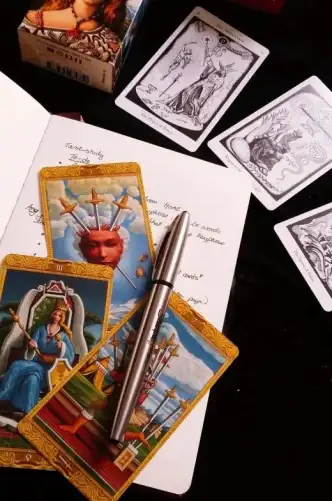
Journaling your readings is always a good idea. Photo by author.
5th Tarot Tip: Developing Your Ability
The trick to performing a good reading is being able to pick up the thread of a story in the cards. It’s difficult at first but it is helpful if the person you are reading for is willing to answer questions. Even when you are completely stumped, you can ask them if the card image means something to them, You’ll be surprised what they come up with.
Alongside this, you need to keep a journal or notebook to record your readings. Do this any way that works for you—a physical notebook or digital. Doesn’t matter.
You can also use your tarot journal to analyse individual cards, pairs of cards and other aspects of the tarot.
The advice given by many established authors and experienced readers is to develop your intuition which can defeat many new readers from the outset. Set aside this advice and instead pay attention to your mental and emotional response. Does the Three of Wands remind you of anything? Does one figure in the Ten of Pentacles look like someone you know? These nudges are not accidental. That is intuition. It’s as simple as that.
So if you see your Aunt Jenny in the cards and you remember that Aunt Jenny was a bit controlling, then say that to your client… or ask them if there is anyone attempting to control them in their life. The number of times this kind of insight has occurred in my readings has proved to me that they are not accidental or irrelevant.
Bonus Tarot Tip:
Well, more than one.
- Use your deck often. Draw a daily card if possible. Journal about it at the end of the day.
- Ask for feedback from your client or from other tarot readers.
- Read, read and read some more. There are a plethora of excellent books on the tarot and each can offer a new perspective. Sometimes you will discover one idea that is worth the price of the book.
- Try various exercises. Some may prove to be useful. Meditation on a card, meticulous analysis of the symbolism, playing games with the cards are just a few.
If you are a tarot beginner, I hope these 5 tarot tips will be helpful to you.
An alternative view of the Fool’s Journey. It might explain a lot about life.

